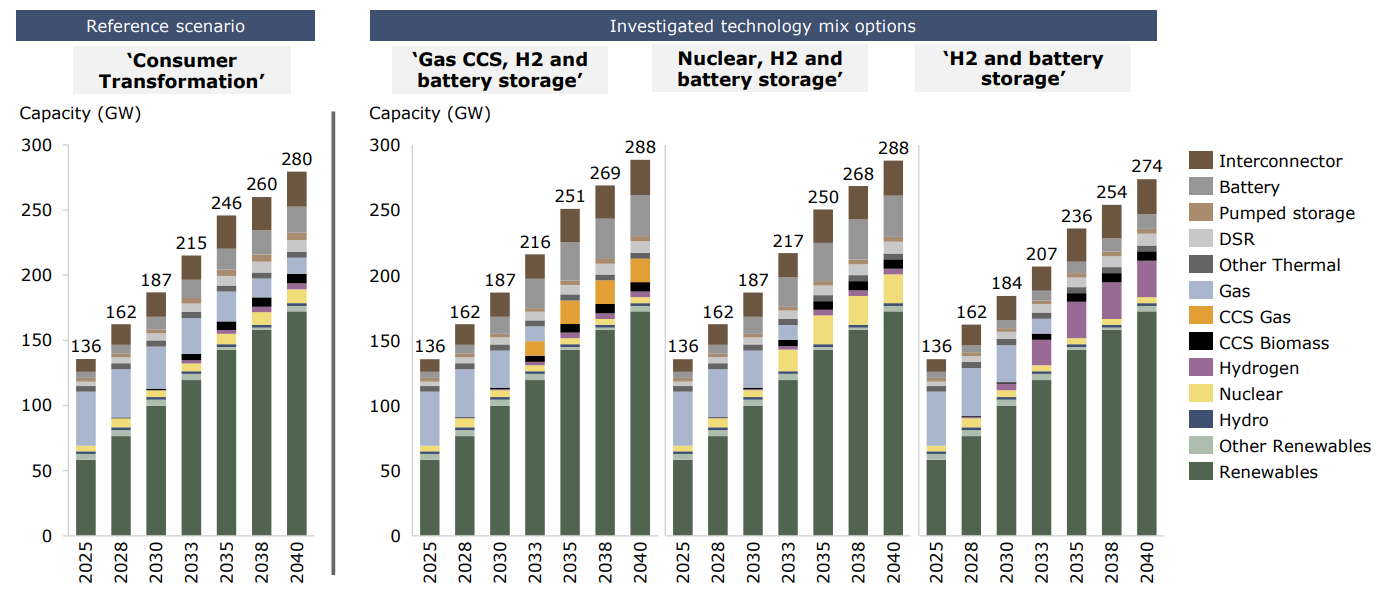Long-term capacity adequacy assessment – National Grid ESO study
For this ground-breaking work for the British TSO, BID3's Loss of Load Expectation (LOLE) module was used to understand how the reliability of the GB electricity system will change in the future.
The study demonstrates the capability of BID3 in evaluating the adequacy of the future net-zero system by 2035. A system with a capacity mix that will be drastically different than today’s: much higher volumes of renewables, larger volumes of storage, as well as greater interconnection to surrounding countries.
>> Link (external) to published report External link, opens in new window.
External link, opens in new window.
Methodology
The BID3 market model was used to simulate the GB and NW Europe power system with multiple weather patterns and random outages. BID3's multi-country and sequential time series approach to loss of load expectation (LOLE) evaluation captures the provision from all technologies, but in particular batteries, interconnectors and flexible demand, providing results for key adequacy metrics set for this study: LOLE and critically tight hours. Alongside the LOLE module, the Dispatch module was run to determine the underlying reasons for load loss. Four technology mixes providing system reliability were created by introducing a capacity shortfall in the reference scenario, then building back alternative technologies that also meet the LOLE standard.
Key findings
Our study concluded:
- New technologies enable the GB system to meet both net zero and adequacy targets. Security of supply and net zero goals can be ensured using technologies such as hydrogen power plants, new nuclear or carbon capture and storage (CCS). However, if all these technologies fail to come to fruition, the GB system will struggle to meet security of supply using limited duration batteries alone.
- Critical stress events move from typically a few hours to multiple days in duration. The GB system moves from one where critical stress events are a few hours in duration, and driven by high demand and plant failure, to one where critical stress events are due to weather events that last multiple days in duration.
- Future system becomes more exposed to NW Europe-wide winter low wind events. Winter periods with sustained cold weather and increased energy demand are the dominant periods of system stress. Increased interconnector capacity means the future system becomes much more exposed to NW Europe-wide periods of low generation (e.g., wind drought in winter), leading to much longer periods of system stress.
- Interconnection means GB is more reliant on neighbours. As the volumes of interconnection grows, the importance of understanding these flows during times of system stress becomes increasingly important: GB becomes reliant on (and a provider of) security from and to its neighbours.
- New metrics are required for future adequacy assessments. The lengthening time of critical stress events and the increased interaction with NW Europe weather events may require new metrics to capture the changing nature of adequacy: in this study we have used the metric ‘Critically Tight Period’ – defined as periods when prices are at VOLL (Value of Loss Load).

